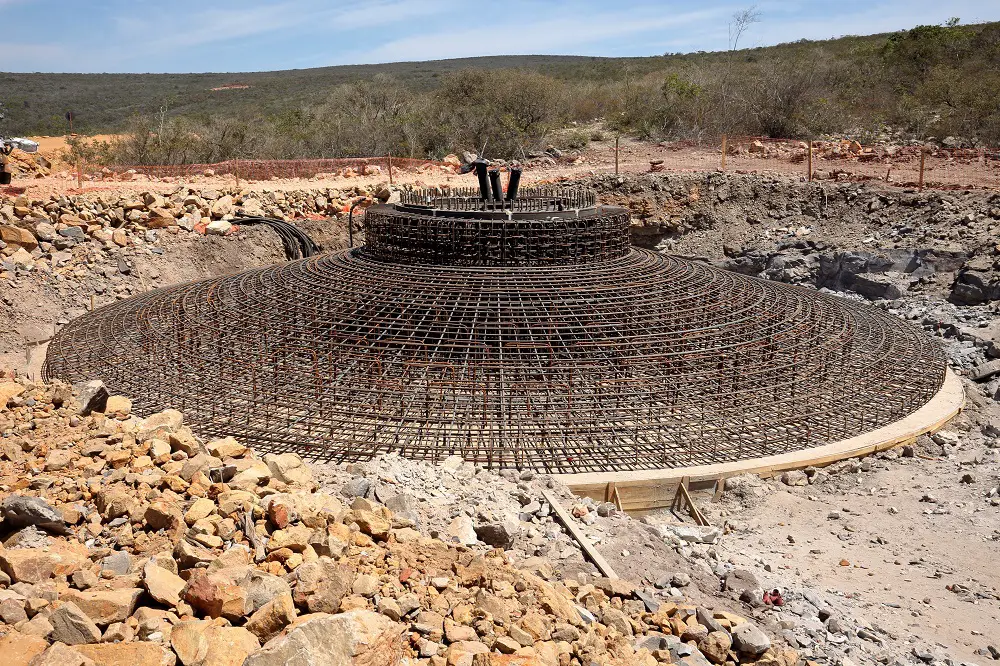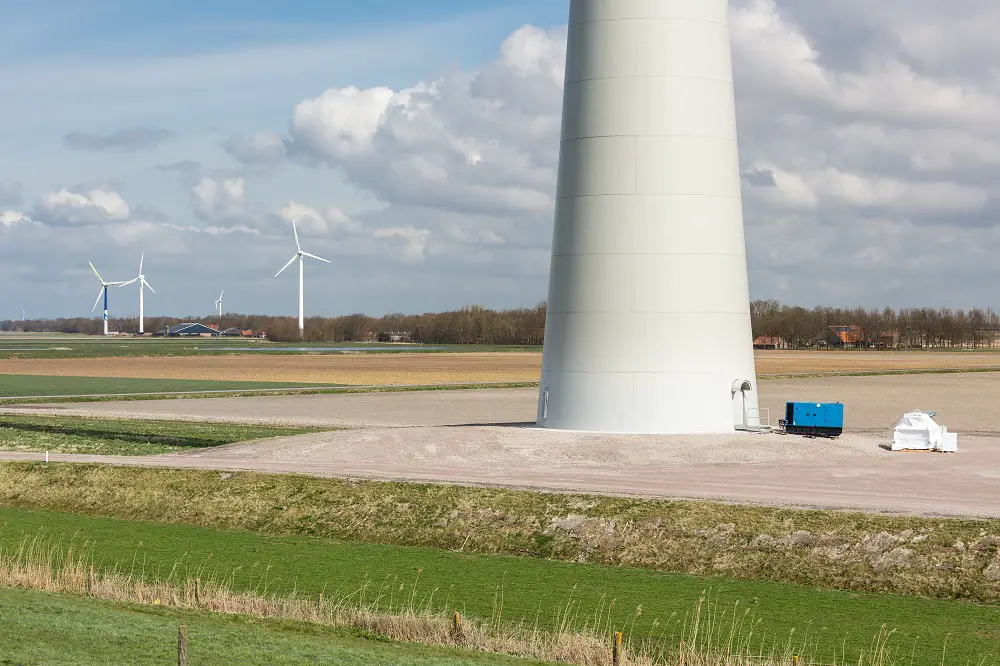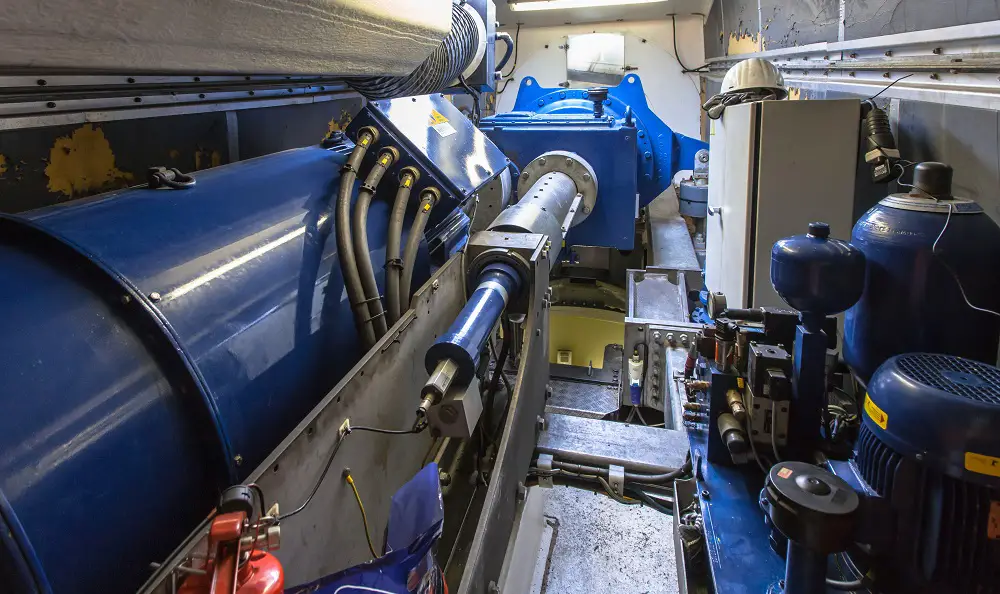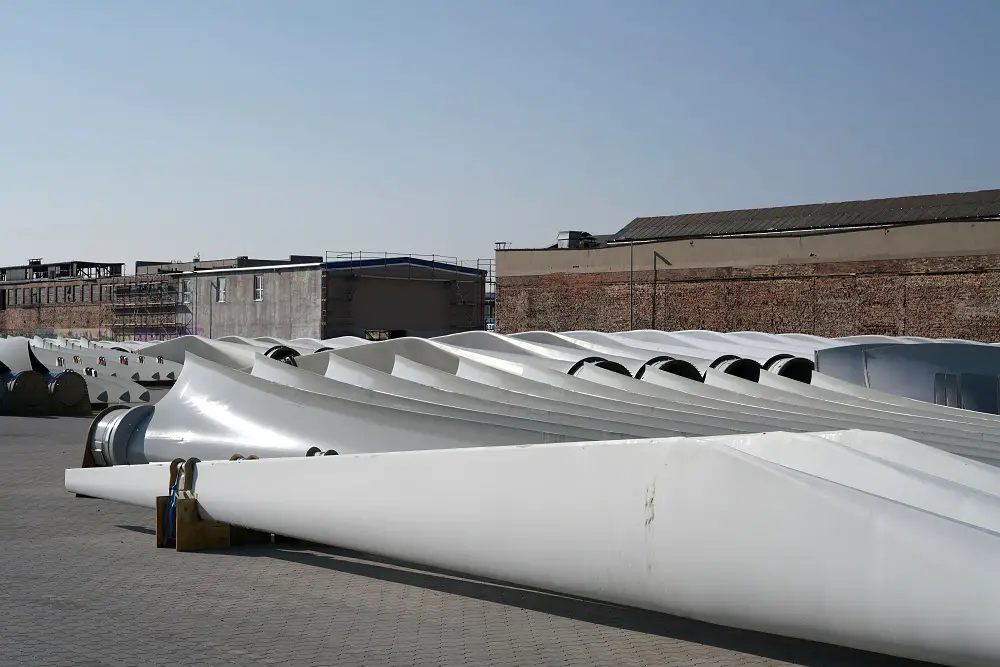Wind power popularity began in the 1990s; turbines have an average life expectancy of 25-years; many of these original models are currently nearing the end of their working life.
The electricity created by harnessing mechanical energy from the wind is one of the greenest types of power. It reduces carbon emissions, saves water, relies on natural resources, is cost-competitive, and efficient.
It seems that every consideration went into making the production of wind power as environmentally friendly as possible. The disposal of the huge structures - especially the blades at the end of their service life may not have received so much thought.
Although many wind turbine's components are recyclable (up to 85%), not all of them are. However, work is underway to find ways of repurposing virtually every part of wind turbines.
What is a Wind Turbine?

Wind turbines are windmill-like structures that harness kinetic energy from the wind and turn it into electrical power.
The generated power transfers to the National Grid where it is distributed to outlets country-wide.
Wind turbines are available in all sizes depending on their intended application.
Large, industrial-scale models prove most difficult to recycle, although small domestic models also contain components that are awkward to dispose of.
The Components of Wind Turbines that are Recyclable
The Foundation

Wind turbines are huge structures that have to withstand high wind speeds. They need to be pinned to the ground in deep, excavated holes.
This involves serious construction work as excavation should be at least 10-feet.
It is back-filled with up to 18000ft³ of cement and a reinforcing cage, fabricated from 68-tonnes of steel.
Tubular Steel Towers

Wind turbines form a conical shape, wider at the bottom for greater stability, narrow towards the top to reduce the amount of steel used in the manufacture.
Each tower assembles from 65 – 100 individual pieces; this is to make transportation as easy as possible.
Bulk waste from the foundation and tower contains a high percentage of steel – high-value to the metal recycling industry.
Gearbox

The gearbox is found between the blades and the generator, where the slow rotational power increases before reaching the generator.
Many working components have a second life within a different product, or the metal has some scrap value.
Generator
The generator is where the kinetic energy is converted to mechanical energy, electricity.
Rare-earth magnets are used within the generator; although they are recyclable, little is known of their use.
Why Some Parts of a Wind Turbine are Recyclable
Many components of a wind turbine are made from concrete, steel, copper, and cast iron – all of which are easy to recycle.
There is a market for these components as they have a market value.
Recycling large quantities of materials keeps the circular-market buoyant.
Why are Wind Turbine Blades Difficult to Dispose of?

The initial issue is with the sheer size of turbine blades. As the demand for clean energy increases, so does the size and quantity of turbines.
In the USA the average blade is 50m; that's the size of a football field.
They are made from fiberglass, a composite material. Although it is lightweight, it is exceptionally durable and withstands the worst possible weather conditions. The material has little value to recyclers; their worth is low.
Separating the plastics to recycle into other workable materials is a virtual impossibility as they are so closely bonded by heat.
The sheer size and strength of the blades also make them complex to break down.
The cement industry has had some success in using disused blades in co-processing. The operation of using waste materials to replace natural minerals and fossil fuels in industrial processes.
The blades that escape landfills are used often in other cement products, outdoor seating, and playground equipment.
What Happens When Wind Turbines Can't be Recycled?
- You might be surprised to know that there is a growing second-hand market for old wind turbines. Decommissioned models due to age, or smaller models, are still of use; Eastern Europe and Latin America, where their uptake of wind power is less-advanced.
Mature markets such as Germany and Denmark happily sell refurbished models.
- As technology advances, possibilities present to update and improve existing wind turbines.
- The remaining components are sent to landfills or incinerated, neither of which helps in wind power's aim of having a low impact on the environment.
When wind turbines are refurbished or transported for use elsewhere, it delays the need for safe disposal or recycling, it doesn't stop it.
Casper, Wyoming, is just one cemetery for fiberglass turbine blades from the first turbines in the 1990s. They come from local wind farms and are cut into 3-pieces before burial. There are 2000-blades added to the site every year.
Is the Future Brighter for Wind Turbine Recycling?
As it is the blades that seem to be the bug in the environmentally-friendly recycling process, that's where more studies have focussed their efforts.
A team of researchers at the National Renewable Energy Laboratory have discovered an exciting alternative to traditional blades.
Conventional blades are made from fiberglass, sheets of balsa wood, and epoxy thermoset resin. To ensure they bond effectively, they are baked at high temperatures.
The type of blade the team has in development still uses fiberglass and balsa wood but bonds with Elium, a thermoplastic resin that sets at room temperature.
When a blade reaches the end of its working life, typically 20-25years, it is reclaimed and heated. The process converts the Elium into liquid form that is used in the manufacture of – WIND TURBINE BLADES.
Final Thoughts
When analyzing the impact of environmentally-friendly wind power, the decommissioning phase was slightly overlooked.
Approximately 85% of a wind turbine is recyclable. That number is set to increase in the not-too-distant future as advances in research race to meet the demand for clean, recyclable, renewable wind power.

